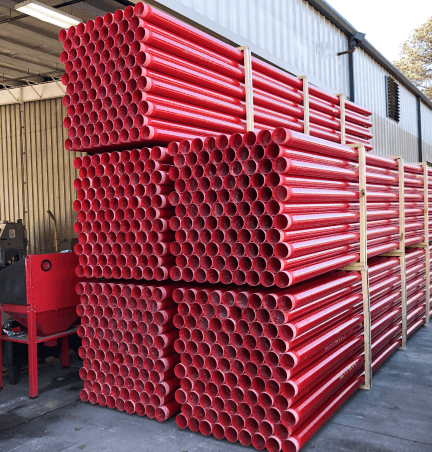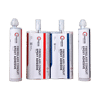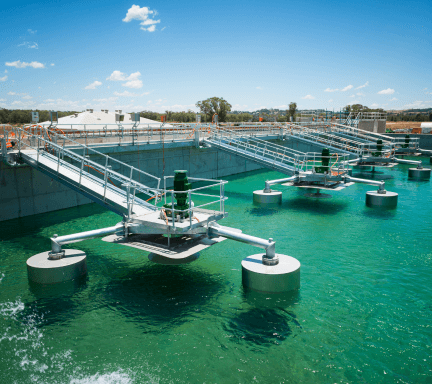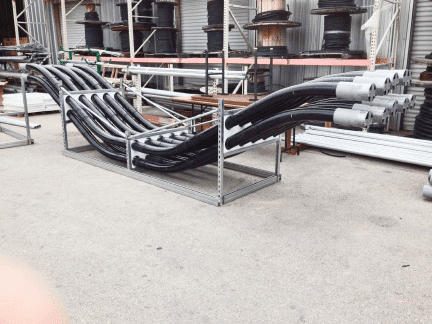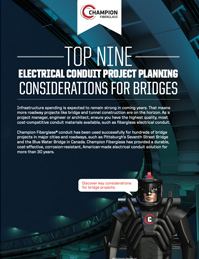In applications where exposed conduit may be present there are several special considerations that project managers and engineers must consider. When conduit is exposed, electrical wiring systems may be left vulnerable to environmental damage due to temperature, UV exposure and corrosion depending on the conduit type used for a project.
Exposed conduit is commonly present in the following applications:
Outdoor Applications: Bridges
Traditionally, galvanized rigid steel (GRC) or PVC-coated rigid metal electrical conduit were commonly used in bridge projects. But epoxy fiberglass conduit (RTRC) offers several advantages including light weight for easy field handling and superior corrosion-resistance. One such example is the Seventh Street Bridge which routes downtown Pittsburgh’s power supply. The Pennsylvania bridge project replaced aging GRC conduit with custom colored RTRC conduit in 2016.
For bridges in cold-weather regions, fiberglass conduit offers a wide temperature range of -60 to 250 ℉ allowing for year-round installations. Additionally, unlike PVC conduit, fiberglass conduit does not get brittle in cold weather.
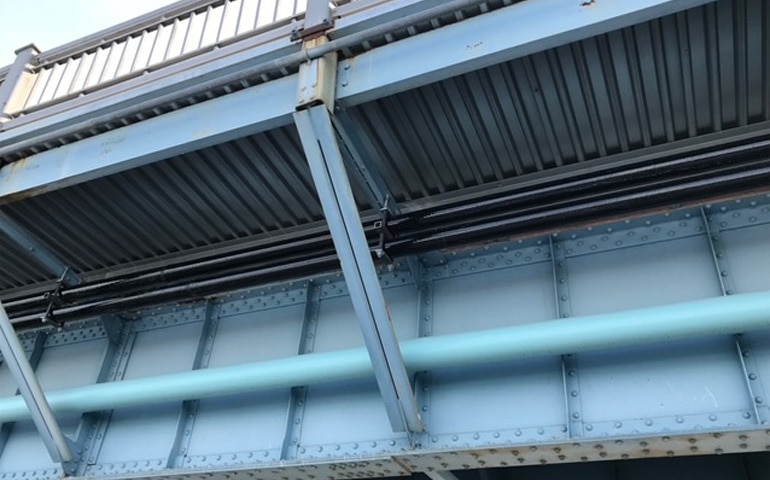
Caustic Environments: Wastewater Treatment Centers and Chemical Plants
Wastewater treatment facilities are especially caustic, damp and prone to extreme temperatures. Conduit exposed to these conditions must be durable and corrosion resistant. Fiberglass conduit is resistant to a wide range of chemicals commonly found in these facilities and can be used in place of PVC-coated steel in applications where the existing conduit has begun to fail. Chemical plants face similar corrosion challenges, and may require a non-metallic conduit solution. Again, epoxy fiberglass (RTRC) conduit can offer long-lasting protection within these hazardous environments.

Coastal Environments
Conduit systems installed in coastal environments are exposed to sun, saltwater, floating debris and extreme weather. UV stability and impact resistance are especially important considerations when selecting an electrical conduit type for port authority and other coastal applications. Haz Duct® maintains its mechanical properties within a range of temperatures from -60℉ to 250℉ and won’t degrade despite prolonged direct sunlight exposure.
Large Scale and Elevated Settings: Commercial and Industrial Projects
Exposed conduit can commonly be found in large scale commercial and industrial projects. In the case of the Niagara Falls Observatory, the electrical conduit system is installed 250 feet above ground at points and required a conduit that was lightweight and easy to install in an elevated setting. In this particular application, using PVC-coated steel instead of RTRC would have resulted in more than 30,000 lbs. of additional conduit material and a truly hefty challenge for installers.
Engineers and project managers should also give additional consideration to regional factors such as temperature and UV exposure when exposed conduit is present. For example, temperature rating is of particular importance in northern climates where cold weather can make some materials (including PVC) extremely brittle. In applications where exposed raceways are present on a rooftop, additional heat will be added directly to the conduit, and as such conductors must be derated due to the additional heat exposure (per the National Electrical Code, NEC Section 310.15(B)(2)(c)).
Of course in addition to reviewing and complying with all NEC (National Electrical Code) requirements, installers should also review local code requirements.
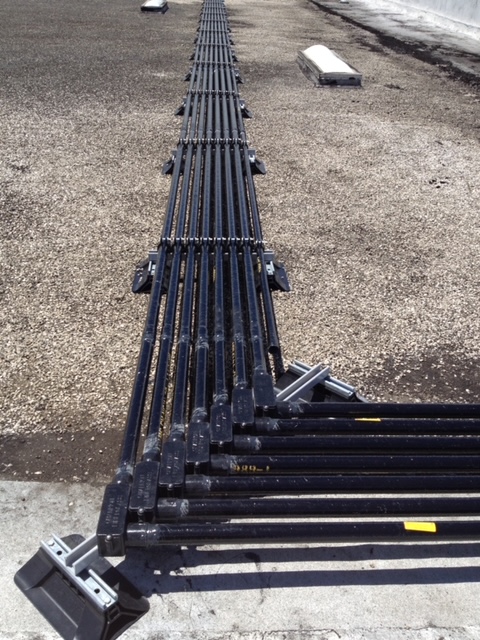
Choosing an Electrical Conduit for an Exposed Application
Specifying the right electrical conduit is key to the longevity of an exposed conduit application.
Rigid metal conduit such as galvanized steel are especially susceptible to corrosion and failure over time, which can lead to costly repairs when exposed in caustic, coastal or outdoor installations.
Flexible metal conduit is approved for exposed applications but is not permitted for wet locations, and would not be appropriate for damp environments of outdoor applications.
Rigid PVC has limited use in exposed outdoor applications due its poor UV stability and high coefficient of thermal expansion.
Fiberglass conduit (RTRC) is approved for exposed use and offers superior temperature ranges, UV stability, and bullet-proof durability making it a safe choice for many exposed conduit applications.
To learn more about fiberglass conduit (RTRC) uses and applications contact Champion Fiberglass directly for more information.
Learn More
Recent Blogs
8 Types of Electrical Conduit and Their Uses
What is Electrical Conduit? Electrical conduit is a raceway used to house and protect electrical wires within a building or…
Rep Spotlight: Coleman-Russell & Associates Successfully Targets the Southeastern U.S.
Mechanical agency partner distributes Champion Strut™ with exceptional customer service. Since 1976, Coleman-Russell & Associates has been a premier mechanical…
Meet HR Department Manager: Dina Alvarado
Get to know Dina Alvarado, Champion FiberglassⓇ HR Department Manager. Learn about her background and vision for human resources.








